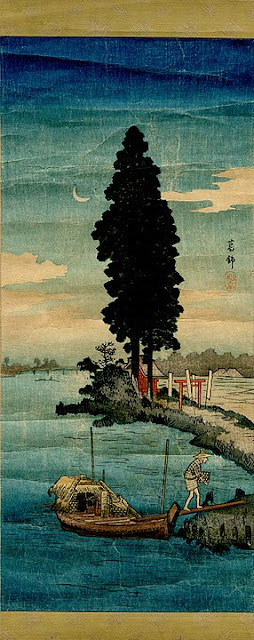 |
| Koitsu: Spring Snow at Maruyama Park |
Tsuchiya Koitsu (1879-1949) doesn't belong to best known Shin-hanga masters, but in my opinion he is underrated. He definitely is one of the best when it comes to landscapes.
Here we see a snowy landscape as only Japanese artists can catch it: Spring Snow at Maruyama Park, a print from 1936.


